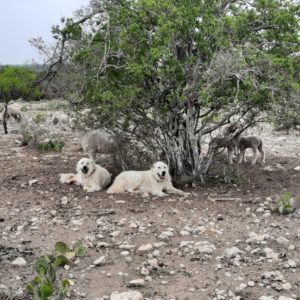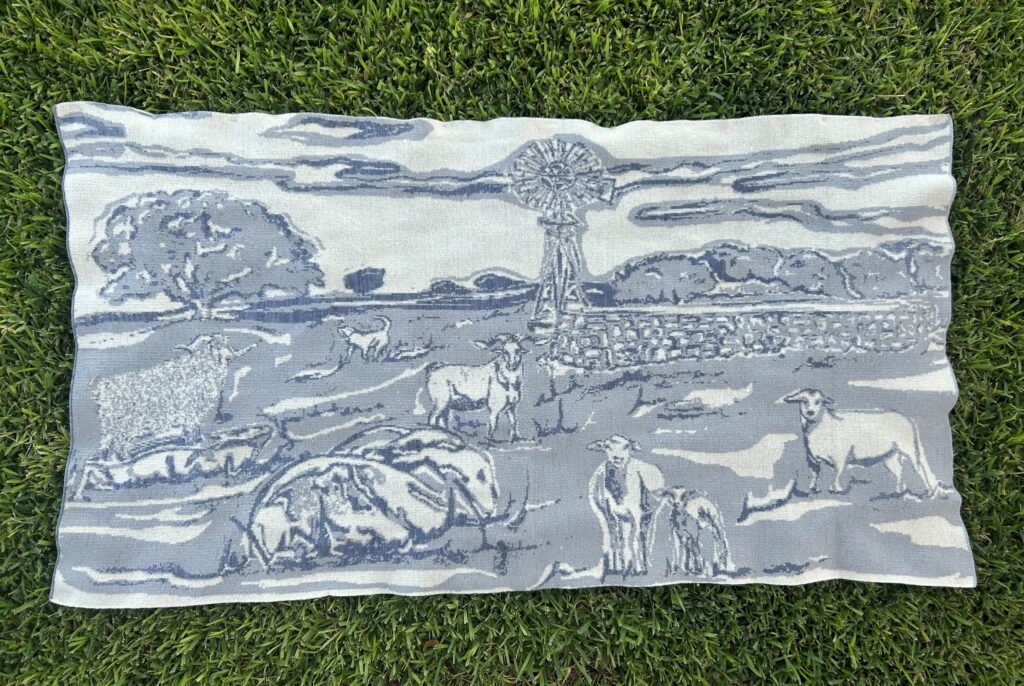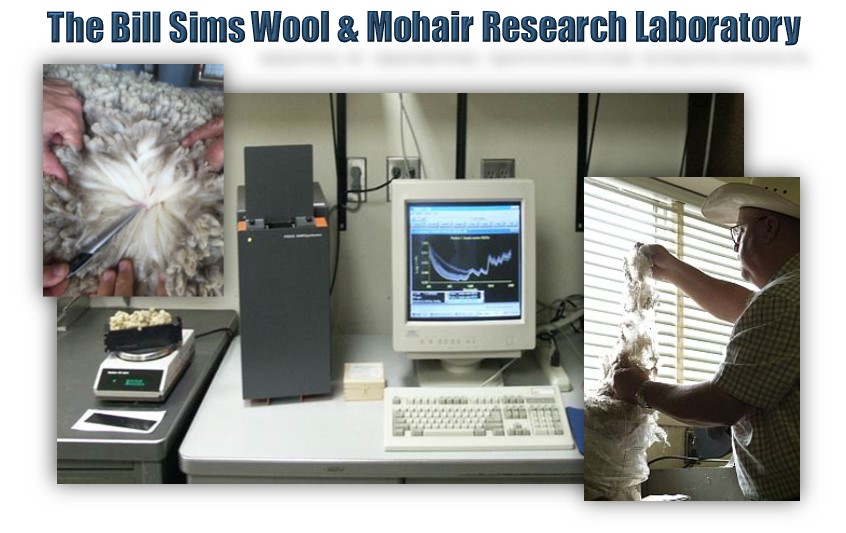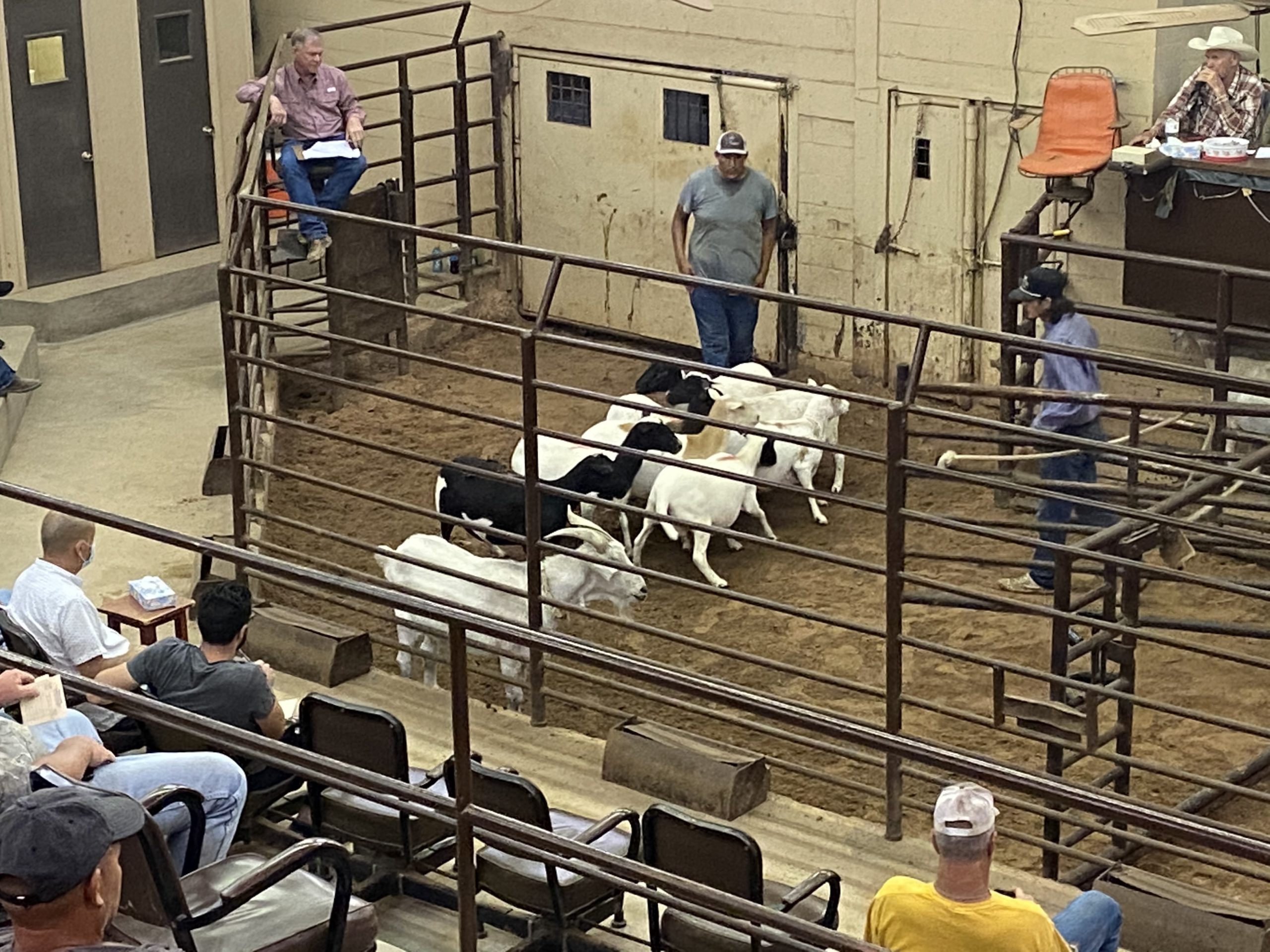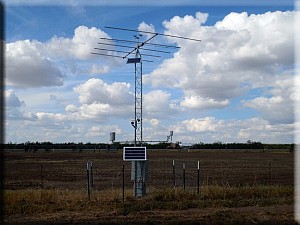AgriLife LGD Program Update
We have gotten some rain at the Texas A&M AgriLife Research and Extension Center here in San Angelo and things have greened up a little. Wildflowers are blooming everywhere. Hopefully we will get some more precipitation later in May still. The second round of puppies will be leaving the Center this month and will be placed across our research ranches and a cooperating producer’s ranch. We will be analyzing the data from their GPS trackers at the Center and provide an update on our findings in the coming months. Our next webinar will be held on May 20 at 3pm. That webinar will discuss legal issues facing producers using LGDs. You can register for the event on our Facebook page or on the AgriLife Centers website under the events section https://sanangelo.tamu.edu/events/ .
This month we are continuing a three-part series on internal parasites presented by our guest writer Meriam Saleh, Ph.D., from the Texas A&M Department of Veterinary Pathobiology at the College of Veterinary Medicine and Biomedical Sciences.
Guest Article – Common intestinal parasites of livestock guardian dogs: Part 2 of 3
This post will focus on the canine roundworm, Toxocara canis. If you missed the first post, you can check it out here and get caught up some background information regarding common intestinal parasites and the importance of prevention. Now, on to roundworms. In the United States the most common roundworm of dogs is Toxocara canis. Similar to hookworms, roundworms live in the small intestine of the

Image 1: Adult roundworms in the small intestine of a dog. You can see just how large these worms are. Source: National Center of Veterinary Parasitology
dog, but they are much larger worms. Adult roundworms can range from 10 to 15 cm in length and are quite robust (Images 1 & 2). Adults feed on intestinal contents within the small intestine, essentially robbing the dog of nutrients. Generally, roundworm infections do not cause diarrhea in dogs, unless there is a coinfection with another parasite. Younger dogs and puppies more commonly show clinical signs which include lethargy, failure to gain weight, coughing, a poor fur coat, and a very characteristic pot-bellied appearance. Dogs with heavy infections will sometimes pass adult worms in their feces or when they vomit—the worms are often still
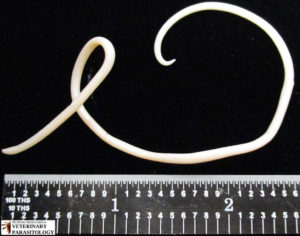
Image 2: Adult roundworm with ruler for scale. Source: The Monster Hunters Guide to Veterinary Parasitology
alive when this happens. If this happens to you and your pet don’t panic. If possible, take a picture or pick up the worms with a disposable bag so you can show them to your veterinarian and be sure to get treatment for the correct parasite. Now, back to the adults in the small intestine. Female roundworms shed eggs that are passed in the feces when the dog defecates.
Roundworm eggs are very characteristic in appearance. They have a thick shell wall and a large single cell inside when freshly passed (Image 3). These eggs are not infective when they are first passed in the feces. Depending on the temperature in the environment it can take anywhere from 2 to 4 weeks for the eggs to develop and contain a larva inside. This larva must reach the
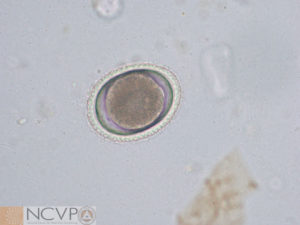
Image 3: Roundworm eggs on a fecal flotation from a dog. Source: National Center for Veterinary Parasitology
third stage (L3) to be infective. But unlike hookworms, in the case of roundworms the L3 stays inside the egg until it is ingested by the host. Dogs then ingest the eggs containing the infective larva from the soil. Once the egg containing the larva hatches, the L3 will migrate through the tissues to arrive in the small intestine where it becomes an adult and the lifecycle repeats itself. Oftentimes in young dogs and puppies the migrating larva goes through the lungs before reaching the small intestine, which can cause coughing. Additionally, some of the larvae may not go to the small intestine but instead arrest and pause their development. These arrested larval worms can reactive or resume their development and go on to the small intestine at a later time, or in the case of a pregnant dam may reactive and move to the uterus to infect pups or in some cases infect pups when they are nursing via milk. An additional infection route for roundworms is when the dog or pup eats a mouse or other small animal that has roundworm larvae in its tissues.
Given there are several ways that dogs can acquire infections and the fact that pups are often born infected the importance of controlling infections cannot be overstated. Keeping the environment clean by removing feces regularly is very important in preventing infections, and if possible limiting access to rodents and other small mammals that may carry roundworms. To manage roundworms passed to the pup from the dam, puppies should be treated at 2, 4, 6, and weeks of age by your veterinarian with an effective dewormer. Routine fecal examinations should be performed at the vet’s office to check that your dog is parasite free and on the appropriate parasite prevention product.
Preventing and treating roundworm infections in dogs is important for the health of dogs, but it is even more important because the canine roundworm, Toxocara canis, is a zoonotic parasite and can infect people too. People become infected when they ingest the infective eggs (containing the L3) from the environment. Remember, the eggs are not infective when they are first passed in the feces; it takes 2 to 4 weeks to larvate and become infective. So, picking up dog feces after defecation is key to prevention. When people ingest infective eggs, the worms can migrate in a variety of tissues. If worms migrate to the eye, it is called ocular larva migrans (OLM), which can lead to visual impairment. Clinical signs of visceral larva migrans (VLM), when larvae migrate to other tissues vary depending on the tissue infected, but can include migration in the liver, lung, muscle, and even the heart causing a variety of clinical signs. Larval migration to the central nervous system (termed neural larva migrans, NLM) is uncommon, but can occur. More information about the zoonotic potential of Toxocara canis from dogs can be found on the CDC website (link here: https://www.cdc.gov/dpdx/toxocariasis/index.html).
Now that you know about the zoonotic significance of canine roundworms it further demonstrates why preventing and controlling infections in dogs is so important. Picking up the feces and keeping the environment clean is crucial when it comes to parasite control. Another critical step is to maintain your dog on year-round broad-spectrum parasite control that is effective against heartworm and intestinal parasites, in addition to fleas, and ticks, as recommended by the Companion Animal Parasite Council. For more information on these and other parasites you can check out the Companion Animal Parasite Council and their Pets and Parasites website (https://www.petsandparasites.org). In the next post we will talk about whipworms in dogs.
Written by: Meriam N. Saleh, Ph.D., is a Post-Doctoral Research Associate at the Texas A&M Department of Veterinary Pathobiology, College of Veterinary Medicine & Biomedical Sciences. Dr. Saleh currently serves as the project leader for the National Center for Veterinary Parasitology. In 2019 she completed a two-year postdoctoral fellowship focused on ticks, their geographic disruption, and tick-borne diseases at Oklahoma State University. She earned a BS in Animal Science from the University of Tennessee in 2011 and a Ph.D. in Veterinary Parasitology from Virginia Tech in 2017. She is also an active member of the American Association of Veterinary Parasitologists.
Texas LGD Association
If you haven’t signed up to be a member of the Texas LGD Association, now is the time! The organization is seeking members to continue with its efforts of promoting LGDs. A Facebook page has been established and the group is looking for donations and members to help fund a website. Once a website is established producers will be able to check the site for breeder locations and if they have puppies available. The organization is a nonprofit group and its goals are to promote the effective use of LGDs, educate producers on the care and use of LGDs and provide a location for ranchers and breeders of LGDs to connect. A membership form is available on the associations Facebook page @texaslgdassociation. The association is planning an annual membership meeting and field day on June 26. Tentative locations for the event are the AgriLife Center or the 4-H Center in San Angelo. Check out their Facebook page for more information.
LGD Puppy Bonding Project
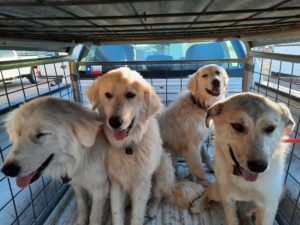
Lenny, Laverne, Squiggy and Wyatt heading to the vet’s office. (Texas A&M AgriLife photo courtesy Costanzo 2021)
All the puppies were spayed and neutered in April. Everyone healed up quickly and they were back out with their charges in a few days. Doc and Thelma decided to continue leaving their pasture to join Thor and the goats. We removed them as often as possible and tried an airhorn to scare them, but nothing was working. Yokes were placed on Doc and Thelma in early April to keep them in their pasture and they have worked out well. The yokes have been keeping them from roaming into a pasture with goats. The pups have been hand fed as the yokes do not allow them to enter the feeding stations.
The yokes are made of PVC pipes about 36 inches long and we use ¼” bolts with locking nuts to join them together. There are three holes on each pipe at the connection points to allow for adjustment on each dog. They should be snug enough that the dogs cannot pull them off. They will stay on the dogs until they leave the Center. One end is shorter and weighted slightly to allow the dogs to lay down easily. The yokes do not allow the dogs to get into most feeding station’s, so they must be hand fed or have a feeder outside of a station. Instructions to make a yoke can be found at https://sanangelo.tamu.edu/files/2020/11/LGD-Yoke-Instructions.pdf
Waylon moved with his Rambouillet ewes to the Sonora Station in April. He is roaming now back to the headquarters. He never roamed to the headquarters at the Center. Hopefully he is adjusting to his new surroundings and not looking for a porch to hang out on! We are tracking Waylon with a satellite-based GPS tracker. The units work well in areas of poor cellular service. The only drawback to the units is that they only ping and upload every 4 hours. We will keep you updated on his status. Johnny is still doing well and not roaming at the ranch in Menard.
All the Superheroes are doing well. Hulk and Goliath have been doing a great job of guarding our lamb crop in Ozona. Thor seems to be getting better about staying with his goats. He has not left them since late February. His nannies have all kidded at this point so they will be moving to a new pasture soon at the Center. Hopefully the move does not trigger him to roam again. Thor will be trying out a new Solar Satellite GPS tracker soon. We will keep you posted on how it works.
If you enjoyed my monthly blog don’t forget to subscribe to it The Guardian Way | Texas A&M AgriLife Research and Extension Center at San Angelo (tamu.edu). To provide feedback on this article or request topics for future articles, please contact me at bill.costanzo@ag.tamu.edu or 325-657-7311. The Texas A&M AgriLife Livestock Guardian Dog Program is a cooperative effort by Texas A&M AgriLife Research and the Texas Sheep and Goat Predator Management Board. Make sure to follow us on our social media sites and share them with your friends and family!
Facebook: https://www.facebook.com/TAMUlivestockguarddog/
Instagram: @tamulivestockguarddog
YouTube: https://www.youtube.com/channel/UCF7YbP6bNDV7___6H8mifBA
Don’t forget to check out the Texas LGD Association on Facebook! Follow the organization at https://www.facebook.com/TexasLGDAssociation A website is coming soon!


